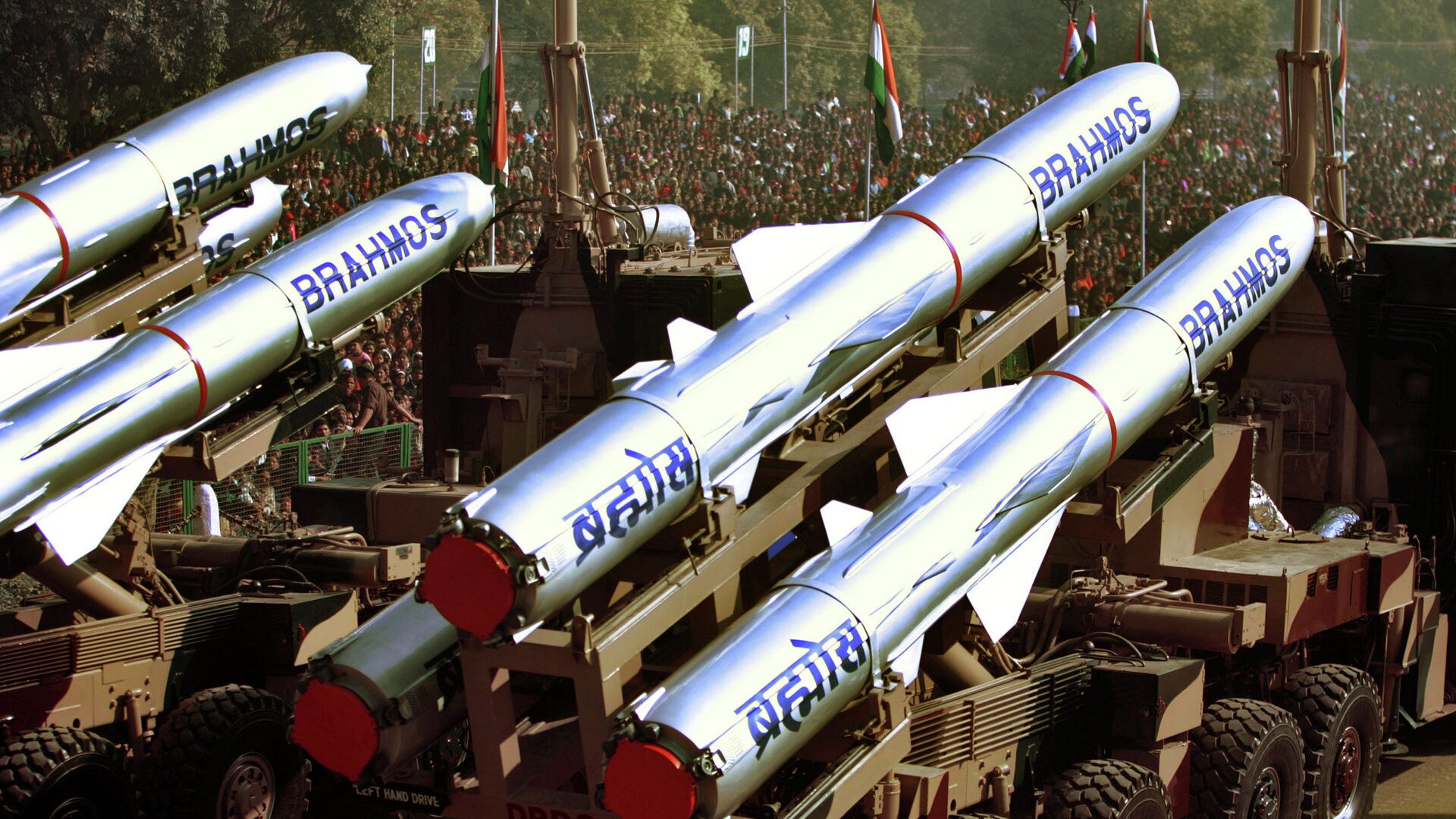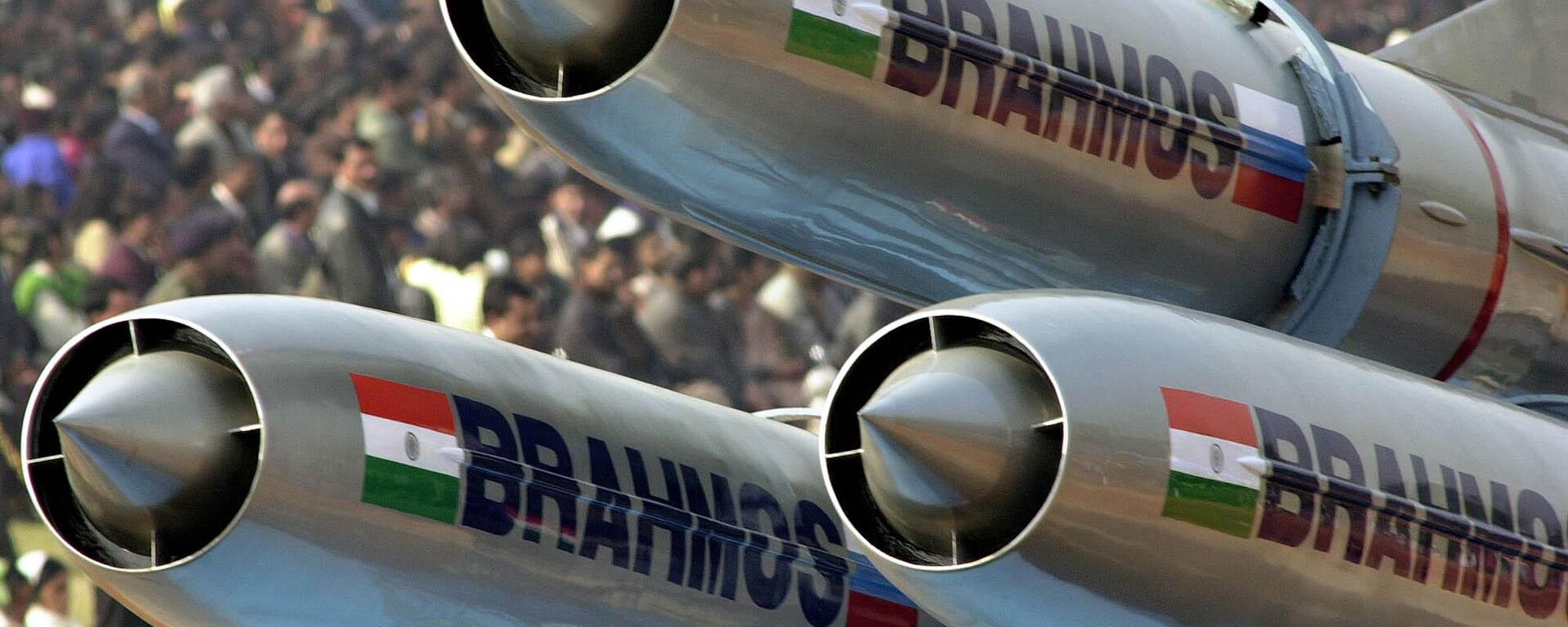https://sputniknews.in/20240925/indias-missile-production-gets-3d-boost-8198365.html
India’s Missile Production Gets 3D Boost
India’s Missile Production Gets 3D Boost
Sputnik India
Additive manufacturing, better known as 3D printing, is a technology used to create physical objects from a digital design. Sputnik India examines how this... 25.09.2024, Sputnik India
2024-09-25T20:37+0530
2024-09-25T20:37+0530
2024-09-26T11:09+0530
explainers
india
russia
moscow
delhi
new delhi
drdo
vshorads (very short-range air defence system)
brahmos supersonic cruise missile
missiles
https://cdn1.img.sputniknews.in/img/07e6/0c/13/152946_0:94:2001:1219_1920x0_80_0_0_526625650d02ff26b0533bd5a10214af.jpg
There are numerous advantages to producing weapons using 3D printing, including allowing complex designs to be completed in a very short time frame, resulting in huge financial savings, experts have said.Russia began using industrial 3D printers to create prototype components and master models for its third-generation T-14 main battle tank (MBT) in 2015, a Russian 3D printing specialist, whose firm executed multiple projects with Indian defence firms, including BrahMos missiles, told Sputnik India.As far as India is concerned, aviation major Hindustan Aeronautics Limited (HAL) and tech company Wipro 3D signed an agreement to collaborate on designing, developing, manufacturing, and repairing aerospace components using metal 3D printing a couple of years ago.In 2022, the Indian Army used 3D printing to prototype a 9mm pistol, with metal-printed parts such as the trigger, featuring an aircraft-grade aluminum top receiver and a carbon fiber lower receiver, the analyst commented.3D printing can produce advanced materials like titanium and graphene, and hybrid components are expected soon.The India-Russia 3D printing partnership is focused on creating and certifying aerospace parts, including maintenance, repair, and overhaul (MRO) components, ensuring their reliability through rigorous testing, the expert highlighted.3D printing is cost-effective because the steps to manufacture a military item are reduced drastically, thus saving a lot of material that otherwise would have been wasted while fine-tuning the product, Indian Army veteran Lieutenant Colonel J.S. Sodhi (Retd) opined.With 3D printing witnessing widespread growth in India's defence sector, missiles such as the very short-range air defence systems (VSHORADS) and man-portable anti-tank guided missiles (MPATGM) rely on launch motors, and in the case of VSHORADS, sustain motors (which help maintain the missile's speed after launch), aerospace commentator Girish Linganna pointed out.Traditionally, these motors are made from special steel alloys using extrusion methods, he remarked.He stressed that India's Defence, Research and Development Organisation (DRDO) and its production partners are looking at 3D printing as a way to solve this issue as the technology can create rocket motor casings much faster than traditional methods. While it might take 3-4 weeks to produce a motor using extruders, 3D printing can do it in just 3-4 days.3D printing can greatly speed up the production of essential missile parts, helping to quickly restock supplies during a war, Linganna asserted. Its flexibility also allows for the creation of new and innovative missile designs with complex shapes, which could improve performance.
https://sputniknews.in/20240612/hypersonic-variant-of-brahmos-in-the-pipeline-ceo-7597184.html
india
russia
moscow
delhi
new delhi
Sputnik India
feedback.hindi@sputniknews.com
+74956456601
MIA „Rossiya Segodnya“
2024
Pawan Atri
https://cdn1.img.sputniknews.in/img/07e6/0c/13/139630_147:0:831:684_100x100_80_0_0_8fa2b25903e7787fe6a2698552c167df.png
Pawan Atri
https://cdn1.img.sputniknews.in/img/07e6/0c/13/139630_147:0:831:684_100x100_80_0_0_8fa2b25903e7787fe6a2698552c167df.png
News
en_IN
Sputnik India
feedback.hindi@sputniknews.com
+74956456601
MIA „Rossiya Segodnya“
Sputnik India
feedback.hindi@sputniknews.com
+74956456601
MIA „Rossiya Segodnya“
Pawan Atri
https://cdn1.img.sputniknews.in/img/07e6/0c/13/139630_147:0:831:684_100x100_80_0_0_8fa2b25903e7787fe6a2698552c167df.png
india, russia, moscow, delhi, new delhi, drdo, vshorads (very short-range air defence system), brahmos supersonic cruise missile, missiles, atacm missiles, military equipment, defense sector, hindustan aeronautics limited (hal)
india, russia, moscow, delhi, new delhi, drdo, vshorads (very short-range air defence system), brahmos supersonic cruise missile, missiles, atacm missiles, military equipment, defense sector, hindustan aeronautics limited (hal)
India’s Missile Production Gets 3D Boost
20:37 25.09.2024 (Updated: 11:09 26.09.2024) Additive manufacturing, better known as 3D printing, is a technology used to create physical objects from a digital design. Sputnik India examines how this method could transform India's military-industrial complex.
There are numerous advantages to producing weapons using 3D printing, including allowing complex designs to be completed in a very short time frame, resulting in huge financial savings, experts have said.
Russia began using industrial 3D printers to
create prototype components and master models for its third-generation T-14 main battle tank (MBT) in 2015, a Russian 3D printing specialist, whose firm executed multiple projects with Indian defence firms, including
BrahMos missiles, told
Sputnik India.
As far as India is concerned, aviation major
Hindustan Aeronautics Limited (HAL) and tech company
Wipro 3D signed an agreement to collaborate on designing, developing, manufacturing, and repairing aerospace components using metal 3D printing a couple of years ago.
In 2022, the Indian Army used 3D printing to prototype a 9mm pistol, with metal-printed parts such as the trigger, featuring an aircraft-grade
aluminum top receiver and a carbon fiber lower receiver, the analyst commented.
3D printing can produce advanced materials like titanium and graphene, and hybrid components are expected soon.
The India-Russia 3D printing partnership is focused on creating and certifying aerospace parts, including maintenance, repair, and overhaul (MRO) components, ensuring their reliability through rigorous testing, the expert highlighted.
"I believe this is a great opportunity for the industry, especially in defence and MRO sectors, where 3D printing could greatly enhance the production of parts for military platforms like fighter jets and transport aircraft," he added.
3D printing is cost-effective because the steps to manufacture a military item are reduced drastically, thus saving a lot of material that otherwise would have been wasted while fine-tuning the product, Indian Army veteran Lieutenant Colonel J.S. Sodhi (Retd) opined.
"India is increasing its missile arsenal significantly, and 3D printing will ensure bulk production of the missiles in a very short time frame, thus obviating the need to have a physical stockpile for a long duration which – apart from being hazardous – also requires regular maintenance when stored for long durations," Sodhi stated.
With 3D printing witnessing widespread growth in India's defence sector, missiles such as the
very short-range air defence systems (VSHORADS) and
man-portable anti-tank guided missiles (MPATGM) rely on launch motors, and in the case of VSHORADS, sustain motors (which help maintain the missile's speed after launch), aerospace commentator
Girish Linganna pointed out.
Traditionally, these motors are made from special steel alloys
using extrusion methods, he remarked.
"Although production of these projectiles is underway, the current capacity may fall short of meeting the demands during wartime. At full production, only around 2,000 units could be produced each year, a number that could be used up in just two months of heavy fighting," Linganna observed.
He stressed that India's Defence, Research and Development Organisation (DRDO) and its production partners are looking at 3D printing as a way to solve this issue as the technology can create rocket motor casings much faster than traditional methods. While it might take 3-4 weeks to produce a motor using extruders, 3D printing can do it in just 3-4 days.
3D printing can greatly speed up the production of essential missile parts, helping to quickly restock supplies during a war, Linganna asserted. Its flexibility also allows for the creation of new and innovative missile designs with complex shapes,
which could improve performance.
"Additionally, India's Military Engineering Services (MES) have used 3D rapid construction technology from private companies to build two houses at the South-Western Air Command in Gandhinagar and Jaisalmer. However, the military's use of 3D printing goes beyond just housing. They are now being asked to construct bunkers and vehicle parking facilities in border areas where traditional building methods are difficult due to harsh weather, limited labor, and threats from neighboring countries," he concluded.



